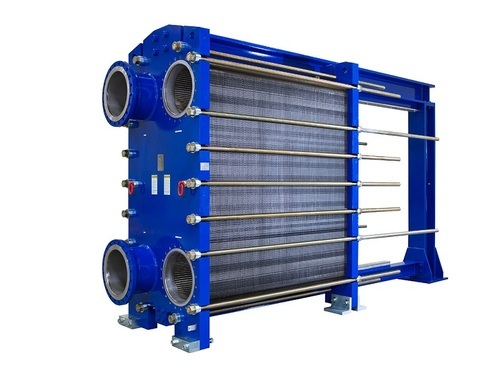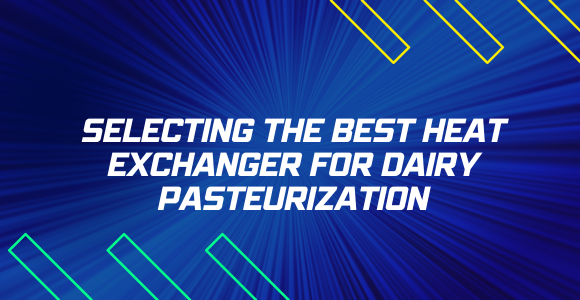In the dairy industry, it is paramount to ensure the safety and quality of dairy products. Pasteurization is one such crucial aspect of dairy processing. It involves heating milk to destroy harmful bacteria while preserving its taste and nutritional value. Therefore, selecting a suitable heat exchanger is essential to achieve effective pasteurization. Let’s explore some key factors that play a vital role in choosing the best heat exchanger for dairy pasteurization.
Understanding the Basics
What is a Heat Exchanger?
A heat exchanger is a device that transfers heat between two or more fluids. Dairy pasteurization plays an important role in heating the milk to the required temperature and then rapidly cooling it down to ensure safety as well as quality.

Some of the factors to consider while choosing the best heat exchanger for dairy pasteurization:
Efficiency
One of the most crucial things to consider while choosing a heat exchanger for dairy pasteurization is efficiency. Herein, it is recommended to look for models that can quickly and uniformly heat the milk while also minimizing the consumption of energy.
Hygiene & Sanitation
A strict maintenance of hygiene standards is essential in the dairy industry. For this, it is important to select a heat exchanger that is easy to clean and sanitize. It will help in preventing any type of contamination and ensure the safety of the product.
Capacity
It is vital to consider the total volume of the milk processed by the dairy plant on a daily basis. It is necessary to select a heat exchanger with the capacity to handle the production requirements efficiently without creating bottlenecks.
Temperature Control
For effective pasteurization, precise temperature control is essential. Therefore, the industry needs to opt for a heat exchanger that permits an accurate monitoring of temperature and adjustment to ensure consistent results.
Reliability
Lastly, choosing a heat exchanger from a reputable manufacturer is of utmost importance. The manufacturer must produce reliable and durable equipment that ensures minimal downtime and consistent performance.
Recommended Heat Exchangers
Here are a few recommendations for the following heat exchangers for dairy pasteurization, based on the above-mentioned factors:
- Plate Heat Exchangers: Plate heat exchangers are great at efficiently transferring heat in dairy processing. As they swiftly move the heat between fluids through metal plates, they are known for ensuring a uniform pasteurization of milk. They have a simple design that allows easy maintenance, minimizes downtime, and ensures smooth operation. It makes plate heat exchangers a top-most choice for dairy producers and prioritises efficiency and product quality.
- Tubular Heat Exchangers: Tubular heat exchangers are known for their robust construction and exceptional heat transfer efficiency. These are the qualities that make them an ideal choice to fulfil the rigorous demands of large-scale dairy processing plants. Their sturdy build-up allows them to withstand the demanding conditions of industrial operations. Along with this, they also ensure consistency and efficient heat transfer. It makes them a preferred choice for dairy facilities that are seeking reliable equipment to maintain the high standards of quality and efficiency required for large-scale production.
Selecting the best heat exchanger for dairy pasteurization is essential for ensuring product safety, quality, and efficiency. Dairy producers can make informed decisions and invest in equipment that helps them meet their specific needs by considering efficiency, hygiene, capacity, temperature control, and reliability factors. Besides, it is important to prioritize safety and quality above everything else to deliver top-notch dairy products to consumers.




